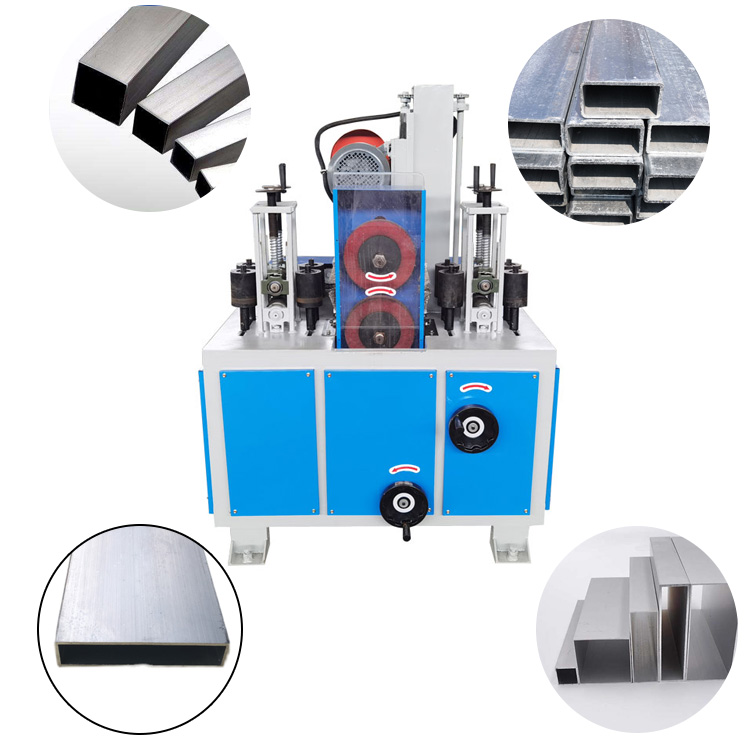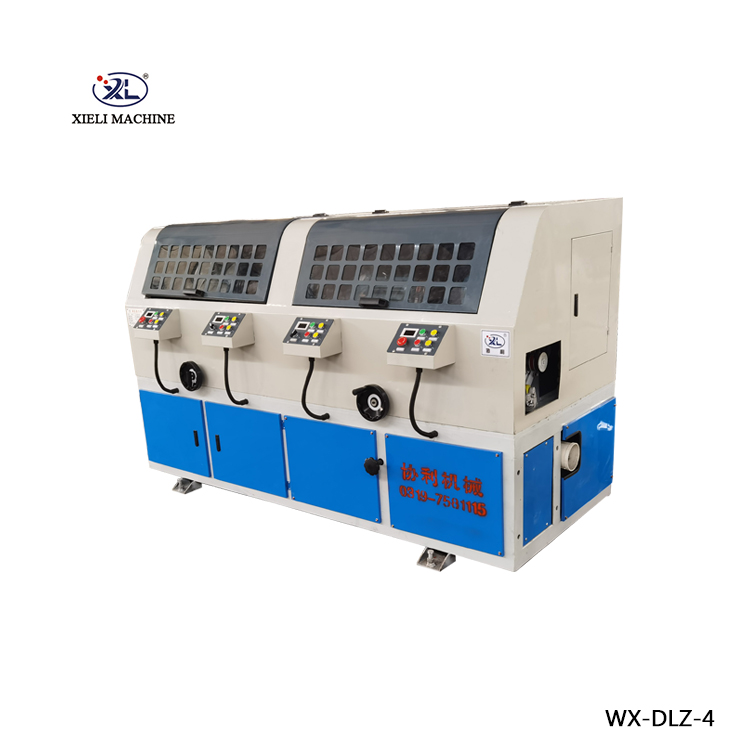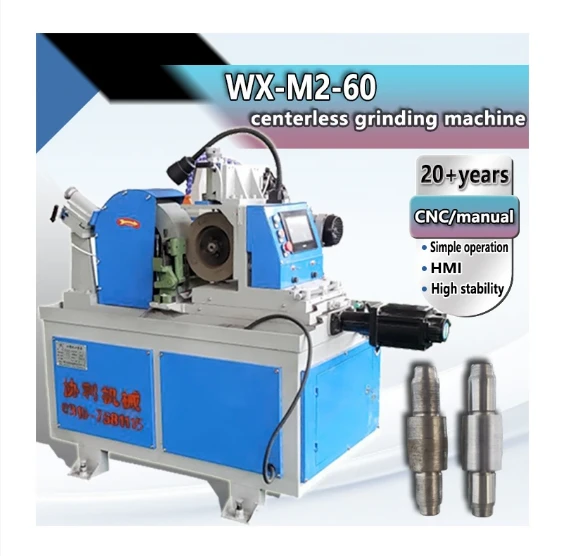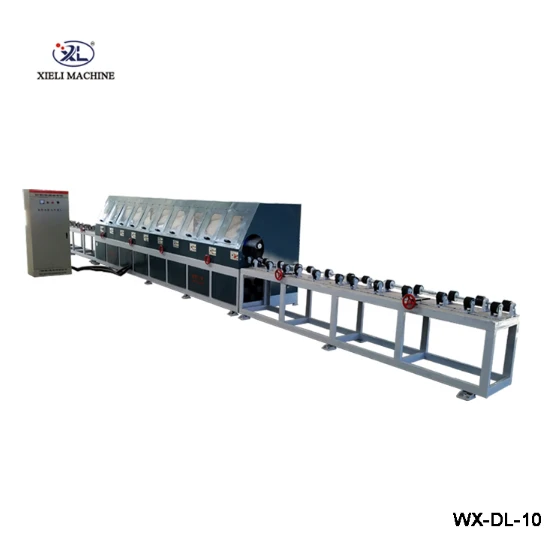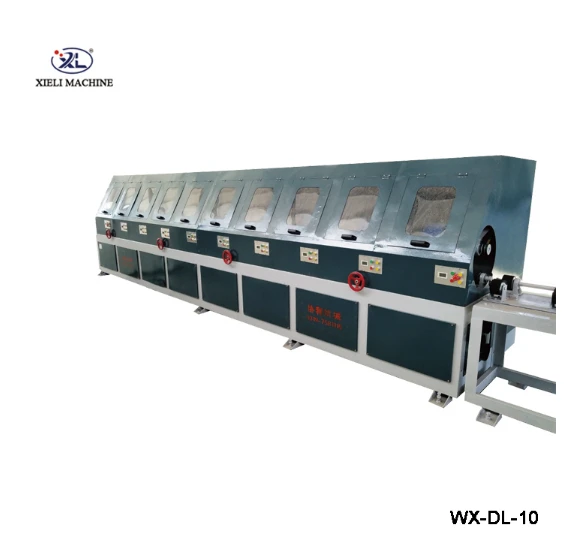The Evolution and Demand for High-Quality Automatic Polishing Machines
The global manufacturing landscape is undergoing a significant transformation, driven by an increasing demand for precision, efficiency, and superior surface finishes across diverse industries. Central to this evolution is the emergence of high quality automatic polishing machine manufacturers, who are at the forefront of delivering solutions that meet stringent quality and productivity requirements. These advanced machines, encompassing everything from high quality centerless belt grinding polishing machine systems to specialized high quality stainless steel pipe mirror polishing machine units, are critical for achieving aesthetic appeal, improving functional performance, and ensuring product longevity. The integration of sophisticated automation, robotics, and advanced abrasive technologies has allowed manufacturers to consistently produce components with mirror-like finishes, precise dimensional accuracy, and enhanced corrosion resistance. This technological leap is particularly vital in sectors such as medical device manufacturing, aerospace, automotive, and consumer electronics, where surface integrity directly impacts product safety, efficiency, and market value. Furthermore, the shift towards automation addresses labor shortages, reduces human error, and optimizes operational costs, making these machines indispensable assets for competitive manufacturing. The market trend indicates a sustained growth in demand for highly specialized and customizable polishing solutions, reflecting the varied and evolving needs of industrial applications worldwide.
In parallel, the industry is witnessing a robust demand for highly specialized machinery, including the high quality pipe polishing machine and the high quality square tube grinding machine, tailored for specific geometric requirements. The rigorous standards of modern engineering necessitate equipment capable of processing complex profiles with exceptional consistency. For instance, the demand for high quality ss square tube polishing machine systems has surged due to the widespread use of stainless steel square tubes in architectural, structural, and decorative applications, where both aesthetic appeal and corrosion resistance are paramount. Manufacturers are increasingly seeking solutions that not only provide a superior finish but also optimize material removal rates (MRR) and reduce processing times. This necessitates machines with robust construction, precise motion control, and adaptive polishing capabilities that can accommodate variations in material hardness and geometry. The technical specifications of these machines, such as spindle speed, feed rate, and abrasive belt grit selection, are meticulously engineered to deliver optimal results, preventing common issues like orange peel effect or streaking, which can compromise product integrity. The ongoing research and development efforts focus on enhancing energy efficiency, integrating smart monitoring systems for predictive maintenance, and further reducing the environmental footprint of polishing operations, aligning with global sustainability goals.
Process Flow and Engineering Excellence in Automatic Polishing Machine Manufacturing
The creation of a high quality automatic polishing machine manufacturers involves a meticulous multi-stage manufacturing process, beginning with the selection of premium raw materials. Typically, high-grade cast iron or structural steel, chosen for their superior vibration damping characteristics and rigidity, form the foundational frame of these machines. This ensures exceptional stability during high-speed operations, critical for achieving precise surface finishes. The manufacturing process initiates with precision casting or forging of critical components, followed by advanced CNC machining (Computer Numerical Control) to achieve micron-level tolerances for mating surfaces and bearing housings. This stage is crucial for the seamless operation of the machine's moving parts, such as polishing heads, worktables, and conveyor systems. Post-machining, components undergo heat treatment processes like stress relieving and tempering to enhance material hardness, wear resistance, and long-term dimensional stability. Every component, from the main frame to the smallest gear, is subjected to rigorous quality checks adhering to international standards such as ISO 9001 for quality management and ANSI standards for dimensional accuracy and safety. The average service life of these machines typically exceeds 15-20 years, a testament to their robust construction and the quality of their components, provided regular maintenance is performed.

Once the individual components meet stringent quality criteria, the assembly phase commences, which is often a semi-automated process augmented by skilled technicians. This involves integrating complex electrical systems, advanced hydraulic or pneumatic actuators, and sophisticated PLC (Programmable Logic Controller) based control systems. The control system, often featuring a user-friendly HMI (Human-Machine Interface), is programmed to manage polishing parameters such as abrasive belt speed, workpiece feed rate, polishing pressure, and oscillation patterns. These machines are extensively utilized in industries like petrochemical (for pipe and vessel polishing to prevent corrosion), metallurgy (for preparing metal sheets for further processing), and water treatment (for polishing stainless steel components used in purification systems). A prime example of their application advantage is in the fabrication of stainless steel components for petrochemical plants, where a high quality stainless steel pipe mirror polishing machine ensures a smooth, non-porous surface that drastically reduces the risk of corrosion and biofilm accumulation, leading to extended service life and enhanced safety. This results in significant energy savings over the operational life of the equipment due to reduced friction and improved fluid dynamics in polished pipes and surfaces. The application versatility is further demonstrated by the adaptability of these machines, allowing them to process various material types, including different grades of stainless steel, aluminum, copper, and alloys, while maintaining consistent performance.
Technical Parameters and Performance Benchmarks of Polishing Systems
Understanding the technical parameters is fundamental when evaluating high quality automatic polishing machine manufacturers. Key specifications include maximum workpiece dimensions (e.g., sheet width, pipe diameter, tube cross-section), polishing head power (kW), spindle speed range (RPM), abrasive belt dimensions (length x width), and feed rate range (m/min). For applications requiring exceptional surface finish, parameters such as achievable surface roughness (Ra value in microns) are paramount. For instance, a typical high quality metal polishing machine price is justified by its capability to achieve Ra values as low as 0.05µm for mirror finishes, which is critical for precision optical components or medical implants. Machines like the Xieli Machinery stainless steel sheet plate panel polishing grinding derusting abrasive belt flat polishing machine demonstrate superior performance by accommodating panel widths up to 2000mm and achieving consistent finishes across large surfaces. The integration of advanced sensors and real-time feedback systems allows for dynamic adjustment of polishing parameters, optimizing material removal while preventing over-polishing or surface damage. This level of control is crucial for handling diverse material properties and geometries, ensuring repeatable high-quality outcomes.

The performance of these machines is also gauged by their efficiency in terms of material removal rate (MRR), energy consumption, and abrasive consumption. For example, a high quality centerless belt grinding polishing machine designed for continuous processing of cylindrical parts can achieve exceptionally high throughputs, reducing production bottlenecks and labor costs. Modern automatic polishing machines incorporate features such as automatic abrasive belt tensioning systems, quick-change abrasive mechanisms, and integrated dust collection systems, which collectively enhance operational efficiency and reduce downtime. The robust construction ensures minimal vibration, which is crucial for achieving consistent surface finishes and extending the life of abrasive materials. Compared to traditional manual polishing methods, automatic systems offer unparalleled consistency, eliminating variations caused by human fatigue or skill differences. This consistency is particularly important in high-volume production environments where product uniformity is a key determinant of quality and customer satisfaction. The return on investment for such machinery is often rapid, driven by significant reductions in labor costs, waste materials, and rework, alongside an improvement in overall product quality and market competitiveness.
Manufacturer Comparison and Custom Solution Advantages
When selecting among high quality automatic polishing machine manufacturers, a thorough comparison is essential, extending beyond just the high quality metal polishing machine price. Key differentiating factors include the manufacturer's experience, their breadth of product offerings (e.g., specialized high quality pipe polishing machine suppliers versus general metal finishing experts), after-sales support, and their capacity for custom solutions. Established manufacturers with decades of experience often possess deeper engineering expertise and a proven track record of reliability and innovation. They are more likely to offer comprehensive training, readily available spare parts, and responsive technical support. The ability to provide customized polishing solutions is a significant advantage, particularly for industries with unique product geometries or stringent finish requirements. For instance, a client needing to polish irregular-shaped medical implants might require a robotic polishing cell with specialized end-effectors and a vision system for adaptive path generation, which only a manufacturer adept at custom engineering can provide. This flexibility ensures that the machine precisely meets specific production needs, optimizing output and quality.

Custom solutions often involve modifying standard machine platforms or designing entirely new systems to integrate with existing production lines. This includes adapting the work-holding fixtures, optimizing the number and type of polishing heads, customizing abrasive delivery systems, and integrating robotic loading/unloading mechanisms. For a client looking to upgrade from an older system, such as a high quality old centerless grinding machine, to a fully automated polishing solution, the manufacturer's ability to provide a seamless transition with minimal disruption to production is paramount. This might involve site surveys, detailed engineering proposals, and phased implementation plans. The total cost of ownership (TCO) for a custom solution, while potentially higher initially, often proves more economical in the long run due to increased efficiency, reduced rework, and prolonged machine lifespan. Manufacturers like Xieli Machinery, with their focus on customizable solutions for stainless steel sheet and panel polishing, embody this capability, designing machines that precisely fit specific client requirements for various surface finishes, from satin to mirror-bright. Their expertise allows them to engineer specialized solutions for unique applications, such as the high-volume polishing of decorative stainless steel panels or the precise finishing of industrial sheet metal components.
Application Scenarios and Success Cases
The versatility of high quality automatic polishing machine manufacturers is best illustrated through their diverse application across various industries. In the automotive sector, these machines are indispensable for polishing chrome trims, exhaust pipes, and alloy wheels to achieve a flawless, reflective finish that resists environmental degradation. A leading automotive component supplier, for instance, implemented a customized high quality centerless belt grinding polishing machine to process thousands of stainless steel exhaust components daily, achieving a consistent Ra value of less than 0.1µm. This not only enhanced the aesthetic appeal but also improved the corrosion resistance, extending the product's lifespan significantly. In the medical field, the demand for highly polished surfaces on surgical instruments and implants is critical for sterility, biocompatibility, and ease of cleaning. A precision medical device manufacturer utilized a robotic polishing system to finish titanium bone plates, ensuring a smooth, crevice-free surface that minimizes bacterial adhesion and tissue irritation, meeting stringent FDA requirements for surface finish. The precision and repeatability of automated systems are paramount in these safety-critical applications.

Furthermore, in the architectural and construction industries, the use of polished stainless steel for facades, railings, and decorative elements necessitates machinery capable of handling large sheets and complex profiles. A prominent construction project recently employed a high quality square tube polishing machine to achieve a uniform satin finish on thousands of meters of stainless steel square tubing for a high-rise building's interior. This ensured consistent visual quality across all installed components, enhancing the overall aesthetic and durability. Similarly, high quality pipe polishing machine suppliers play a crucial role in delivering machinery for the food and beverage industry, where internal and external pipe surfaces must be polished to a sanitary finish to prevent contamination and facilitate clean-in-place (CIP) processes. One dairy processing plant reported a 30% reduction in cleaning time after installing a new mirror polishing machine for their stainless steel pipelines, directly translating to increased operational uptime and reduced utility costs. These case studies underscore the tangible benefits and diverse applicability of advanced automatic polishing solutions across a spectrum of industries, demonstrating significant improvements in product quality, operational efficiency, and cost-effectiveness.
Key Technical Advantages and Performance Metrics
The technical advantages of modern high quality automatic polishing machine manufacturers lie in their precision, consistency, and automation. Unlike manual methods that are prone to human error and inconsistency, automated systems leverage sophisticated control algorithms to maintain uniform polishing pressure and speed, resulting in predictable and repeatable surface finishes. This is critical for meeting stringent quality standards in industries such as aerospace, where even microscopic imperfections can compromise structural integrity. Machines designed for high quality ss square tube polishing machine applications, for example, incorporate multi-axis control systems and specialized abrasive heads that can conform to the tube's geometry, ensuring a uniform finish on all four sides and edges. This level of precision significantly reduces rejection rates and the need for costly rework, thereby improving overall production efficiency and profitability. The inherent robustness and structural integrity of these machines, often built with heavy-duty cast components, minimize vibrations during operation, which directly translates to smoother finishes and extended abrasive life.
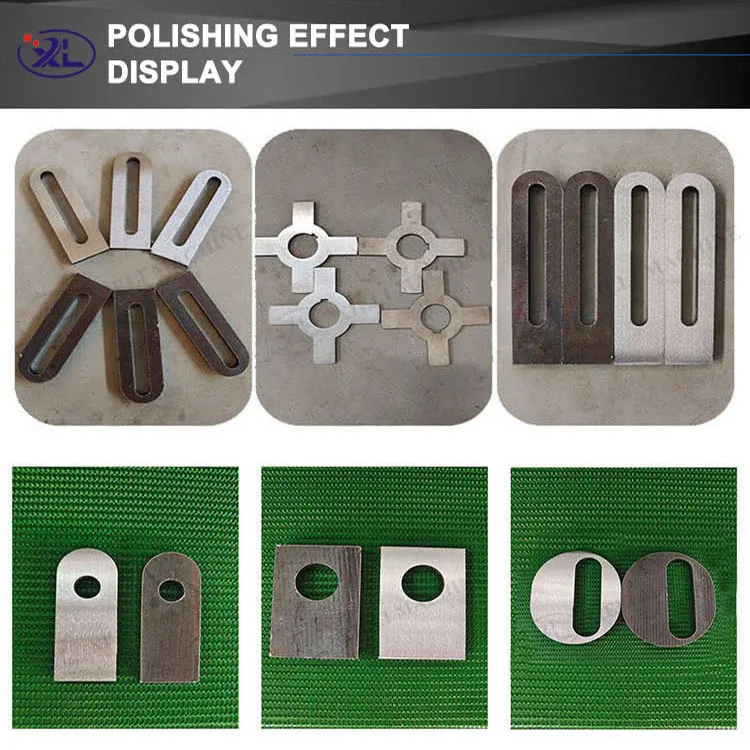
Furthermore, the integration of advanced sensors and diagnostic tools allows for real-time monitoring of machine performance and surface quality. This data can be used for predictive maintenance, minimizing unplanned downtime and optimizing machine utilization. Energy efficiency is another significant advantage; modern automatic polishing machines are designed with energy-saving motors and intelligent power management systems that reduce electricity consumption compared to older, less efficient models. For example, many models now feature variable frequency drives (VFDs) that adjust motor speed and power consumption based on the load, leading to substantial energy savings over time. The reduced reliance on human labor not only lowers operational costs but also improves workplace safety by removing personnel from hazardous polishing environments. The ability to integrate these machines into larger automated production lines, through industry-standard communication protocols, further enhances their value proposition, enabling seamless data exchange and centralized control. This technological sophistication positions these manufacturers as critical partners in achieving advanced surface finishing requirements across global industries.
Comprehensive Technical Specifications of Automatic Polishing Machines
The following table provides a general overview of typical parameters for high quality automatic polishing machine manufacturers, illustrating the capabilities and specifications essential for B2B decision-makers. These parameters are crucial for assessing a machine's suitability for specific applications, ranging from small components to large sheets and tubes.
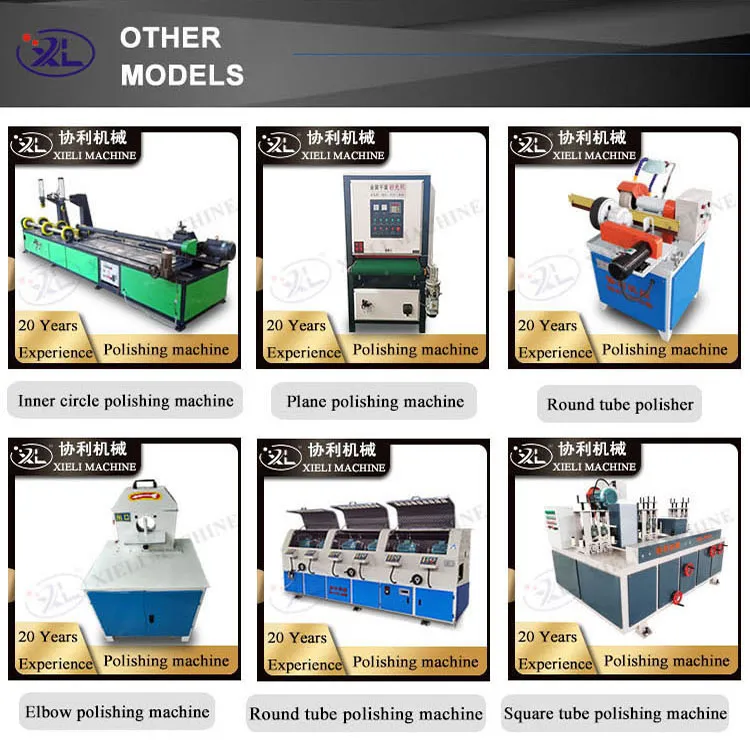
The interplay of these technical parameters defines the machine's capability and its suitability for specific industrial applications. For instance, a high quality metal polishing machine price is often directly correlated with its ability to achieve finer Ra values at higher throughputs, signifying advanced engineering and superior component quality. When considering Xieli Machinery stainless steel sheet plate panel polishing grinding derusting abrasive belt flat polishing machine, these parameters translate into reliable performance for a wide range of flat material finishing tasks. This comprehensive data empowers businesses to make informed purchasing decisions, ensuring that the selected polishing solution not only meets current production demands but also offers scalability and adaptability for future requirements. Manufacturers providing transparent and detailed specifications, coupled with robust testing data, significantly enhance trustworthiness and authority within the market.
Ensuring Trustworthiness and Comprehensive Support
For businesses investing in significant capital equipment like those from high quality automatic polishing machine manufacturers, trustworthiness is built upon several pillars: transparent communication, robust quality assurance, and comprehensive after-sales support. Reputable manufacturers typically hold certifications like ISO 9001, which signifies adherence to international quality management standards throughout the design, manufacturing, and service processes. They also often provide CE certification for equipment sold in European markets, confirming compliance with health, safety, and environmental protection standards. Customer testimonials and case studies, where specific challenges were overcome and significant benefits realized, serve as powerful indicators of a manufacturer's reliability and expertise. Delivery schedules are clearly communicated, with lead times typically ranging from 8 to 16 weeks depending on customization and component availability. This transparency helps clients plan their production schedules effectively and minimizes supply chain uncertainties. Furthermore, a commitment to ongoing innovation, as demonstrated by continuous R&D into new polishing technologies and materials, reinforces a manufacturer's leadership position in the market.
A critical aspect of trustworthiness is the provision of solid warranty and support structures. Most leading high quality automatic polishing machine manufacturers offer a standard warranty of 12 to 24 months on parts and labor, covering manufacturing defects and ensuring peace of mind for the buyer. Beyond the warranty period, comprehensive customer support includes access to technical hotlines, remote diagnostics capabilities, on-site service technicians, and readily available spare parts inventories. This ensures minimal downtime and sustained operational efficiency throughout the machine's long service life. Training programs for client personnel on machine operation, maintenance, and troubleshooting are also routinely provided, empowering users to maximize the performance and longevity of their investment. The robust support system for products like the Xieli Machinery stainless steel sheet plate panel polishing grinding derusting abrasive belt flat polishing machine ensures that businesses can confidently integrate these advanced systems into their operations, benefiting from reliable performance and expert assistance whenever needed. This holistic approach to customer engagement and service differentiates truly high-quality manufacturers in a competitive global market.
Frequently Asked Questions (FAQ)
-
Q: What types of materials can your automatic polishing machines process?
A: Our machines are designed to polish a wide range of metals, including stainless steel (various grades), aluminum, copper, brass, and various alloys. Specialized abrasive belts and compounds are selected based on material properties.
-
Q: How do your machines ensure consistent surface finish?
A: Consistency is achieved through advanced PLC/CNC control systems that precisely regulate polishing pressure, feed rate, abrasive belt speed, and oscillation patterns. Robust machine construction also minimizes vibration, contributing to uniform results.
-
Q: What is the typical lifespan of a high quality automatic polishing machine manufacturers product?
A: With proper maintenance and regular servicing, our machines are built to last for 15-20 years or more, thanks to their heavy-duty construction and use of high-quality components.
-
Q: Can your machines be integrated into existing production lines?
A: Yes, our automatic polishing machines are designed with modularity and common industrial communication protocols (e.g., Modbus, Ethernet/IP) to facilitate seamless integration into existing automated production lines and factory management systems.
-
Q: What kind of after-sales support do you provide?
A: We offer comprehensive after-sales support including a standard warranty, remote technical assistance, on-site service, spare parts availability, and training programs for your operating and maintenance personnel.
References
- Smith, J. A. (2022). Advances in Automated Surface Finishing Technologies for Metal Components. Journal of Manufacturing Engineering and Technology.
- Chen, L., & Wang, Q. (2021). Precision Polishing of Stainless Steel Surfaces: Challenges and Innovations. International Journal of Abrasive Technology.
- Garcia, R., & Lopez, M. (2023). Impact of Automated Polishing on Corrosion Resistance and Aesthetic Quality of Industrial Pipes. Surface Engineering and Applications.
- ISO 9001:2015 - Quality management systems — Requirements. International Organization for Standardization.
- European Committee for Standardization. (2020). Machinery safety - General principles for design - Risk assessment and risk reduction (EN ISO 12100:2010).

